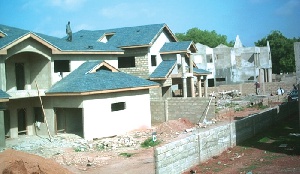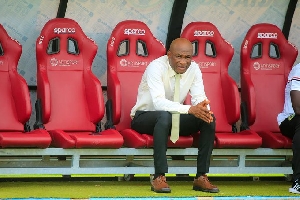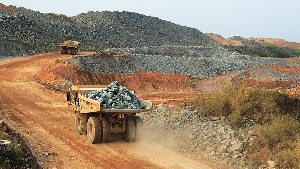So much is being said about housing in Ghana lately by different people – professionals such as architects, engineers, planners, real estate developers and politicians to name a few.
In the various discourses, all kinds of information are released almost on a daily basis on the housing situation in the country. Different figures are cited for Ghana’s housing deficit and these range from 1.7 million to over two million. Annual population growth also means that there will be regular upward revisions of such figures regularly.
Additionally, various approaches towards reducing this housing deficit are being put forward. While real estate developers are advocating for support from the central government, some politicians are claiming that Ghana’s housing issues could be addressed with “high-rise” buildings. Does Ghana have a housing problem? The answer is yes. Is the housing problem surmountable? The answer again, is yes.
What is the housing problem in Ghana?
Simply put, despite the fact that over the years, both the private sector and the central government have been providing housing units, many Ghanaians do not have access to decent housing.
Housing does not mean durable physical buildings only but also includes amenities such as access roads, water, electricity, toilet facilities and open spaces in the community, to name a few.
However, before any durable housing unit can be developed anywhere in the country, land has to be acquired and then the layout of the housing unit, commonly referred to by many Ghanaians as “building plans”, have to be produced.
In the past, such drawings were generally produced by architectural draughtsmen and women. Today, thanks to the efforts of the Architects Registration Council (ARC) of Ghana and the Ghana Institute of Architects (GIA), many members of the Ghanaian public now know that only competent and qualified architects, with a minimum of eight years of training and practice both in the university and in architectural offices, can be the authors of such architectural designs.
Another major problem is that there are not enough architects in the country and most of the Metropolitan, Municipal and District Assemblies (MMDAs), the bodies that approve architectural designs for construction are still manned by draughtsmen and women.
Government involvement
The central government’s involvement with housing in Ghana goes all the way back to the colonial era when bungalows were provided for the expatriate civil servants across the country.
After the 1939 earthquake which destroyed many buildings across Ghana, housing estates were built at Kaneshie, Korle Gonno and Mamprobi in Accra, and in the other regions. In Kumasi, a post-Second World War housing policy of the then British colonial government dubbed “New African Housing”, areas designed to wrap around the existing centre of Kumasi in an urban planning scheme by the British architectural firm Fry and Drew in 1945 led to the development of the Asawasi Housing Estate.
This was built in stabilised, landcrete blocks, mass-produced roof trusses, doors and windows and lean cement roofing tiles. It was not only the first public housing scheme in Kumasi but it was also one of the few in the country with rental units and diverse space sizes, i.e. one, two, and three-bedroom units.
Other involvements of the central government to help with the provision of housing in Ghana included the creation of the State Housing Corporation and its activities across the country, as well as the rather expensive Shokbeton concrete housing at Suntreso, Kumasi, which saw precast concrete units imported from Europe, the Dansoman Housing Estate of the Acheampong regime and the Sakumono Housing Scheme of the Rawlings era, the Affordable Housing Project of the Kufuor period and the Saglemi Housing Scheme of the Mahama era. In spite of all these activities, the development of public housing has hardly made any major impact on the housing situation in Ghana.
Private housing
The development of public housing in Ghana, however, has over the years, provided the bulk of housing developments in the country. It can simply be described as housing provided by individuals and organisations for self-occupancy or for sale.
It includes self-help housing, which has been used extensively in vernacular or traditional housing, which uses locally available buildings and forms the bulk of housing in the rural areas. It further includes what has become known as the development of anarchist housing found in places such as Old Fadama and other places referred to as slums across Ghana.
The Ghana Real Estate Developers Association (GREDA), is also part of this group providing housing units for sale. This body claims that its members operate with loans from the banks at very high interest rates. Therefore as business men and women, they have to sell their housing units to make profits. So arguably, the GREDA has opted for the high-end of the housing sector but knows very well that their products cannot be afforded by most Ghanaians.
Regularise development settlements
It is simply not possible for every Ghanaian to build or own his or her house. Most people will rent housing units from the time they start working till they go on retirement. The 2015 Ghana Government Housing Policy document states that affordable housing is when workers can afford 30 per cent of their income as rent. So what is needed currently in Ghana today, is a huge injection of affordable rentable housing units on the market.
Such housing units must come in the form of bedsitters, one-, two- or three-bedroom units. In most parts of the world, workers progress from smaller spaces to larger ones as and when they make progress in their lives. Unfortunately, in Ghana, many people – from the lowest labourer to the highest officer in institutions – aspire to build their own houses in the shortest possible time.
This is one of the reasons which has led to urban sprawl in settlements across Ghana with various consequences. There is the need to control and regularise the development of settlements in Ghana. Besides, land is not limitless. This brings in the issue of high-rise buildings which have been suggested as the panacea for the housing problem.
A high-rise building can be described as a building with many storeys or floors. High land values led to the development of high-rise buildings initially developed for offices in urban areas in Europe and North America. They were later used for residential buildings and it is important to mention that in the early 1970s, high-rise residential buildings across Europe and North America were demolished after they deteriorated so rapidly after less than three decades of occupancy.
The lifts or elevators, chutes for the disposal of refuse and water and electricity services failed miserably, and staircases were choked with refuse. The recent Grenfell housing complex fire disaster in London, in the United Kingdom in 2017, also points to possible dangers associated with high-rise residential buildings.
In simple, plain language, high-rise residential buildings may not work for the average Ghanaian. Yes,the Villagio residential complex near the Tetteh Quarshie interchange in Accra towers over 25 floors above the ground. It is the tallest building in Ghana presently and is also one of the most expensive residential buildings in the country. It is simply not for the Ghanaian public.
Solution
What is a possible solution to the housing problem in Ghana then? Mixed-use walk-up apartment or housing units going up to four or five floors could be an answer. Such units could have a mixture of one-, two- and three-room units so that a unit could have a combination of different family sizes with portions of the ground floor used for stores/shops and other commercial activities.
Thus, a combination of such housing units sited in communities with open spaces and provided with access roads and services such as water, electricity, schools and children’s playgrounds, will go a long way towards addressing the housing issue in Ghana.
In this era of private-public partnership and “one-district, one-factory,” “one million dollars for every constituency,” is it not possible to consider “one constituency, one housing community” to address the housing situation in Ghana?
Opinions of Friday, 20 October 2017
Columnist: Prof. George W.K. Intsiful















